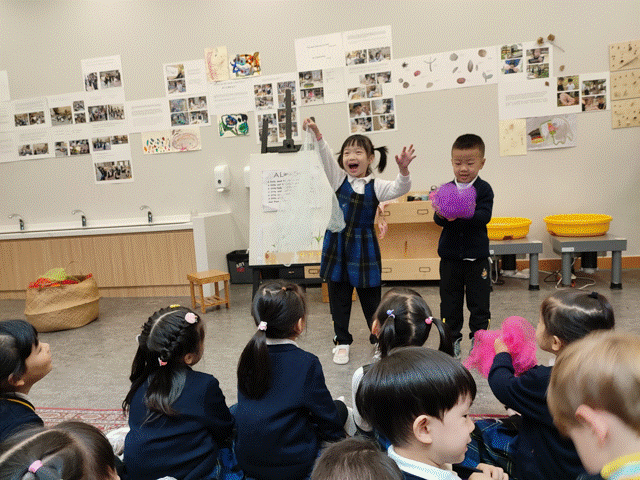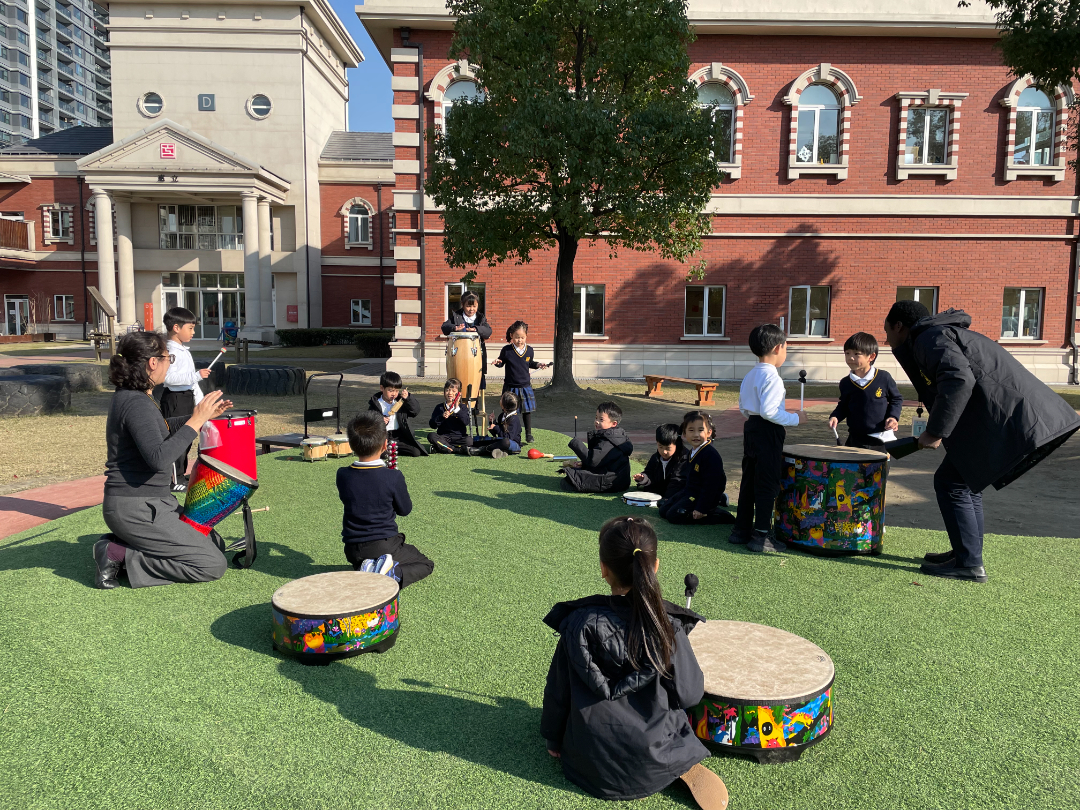
Tell me, I forget, show me, I remember, involve me, I understand.
— Carl Orff
In the music classes of Huili Nursery Hangzhou, teachers and children cooperate and participate together. We listen, sing, dance, play and create together. At the same time, our curriculum is closely linked to the thematic projects of each class, helping children better understand the world through music.
Our music teaching has the following characteristics:
Comprehensive
We encourage children to identify “knowledge” or “skills” through personal experience via their involvement in musical activities. Therefore, we combine language, rhythm and music teaching through various elements:

This is done so that children can participate in music activities with enthusiasm and comprehensively improve their language ability, understanding, and performance skills.

Children are born artists so we also focus on creativity. In our class, we respect the creation of every artist. Body rhythm is the most natural way for children to express their emotions when they hear music. They make impromptu body responses following the speed, strength, melody and other elements of music. Children are encouraged to visualise music and to create instruments that are unique in the world.
Rich cultural elements

In the community of Huili Nursery Hangzhou, we have rich and diverse cultural backgrounds. We use music as a medium to convey different sounds to children, and at the same time, we are exploring cultural treasures. They learn about different styles of music, musical instruments, dances and singing forms to understand how people from different cultural backgrounds live and think. Children learn to be more inclusive and respect other cultures in this process
Inspire children with natural materials
The famous music educator Karl Orff believed that “The Elementary music education should not be merely an auxiliary and secondary subject, but the foundation of all other subjects”. The word “elementary” is a concept used by Mr. Orff in his exploration of the world with the help of ancient Greek philosophers. It has the characteristics of basic, important, and eternal status. However, elementary music education is more than just the accumulation of rhythm, melody and harmony. When teaching, teachers give children the materials and resources to stimulate the desire of students to create music, and then students take this as the starting point and continue to try and explore.
